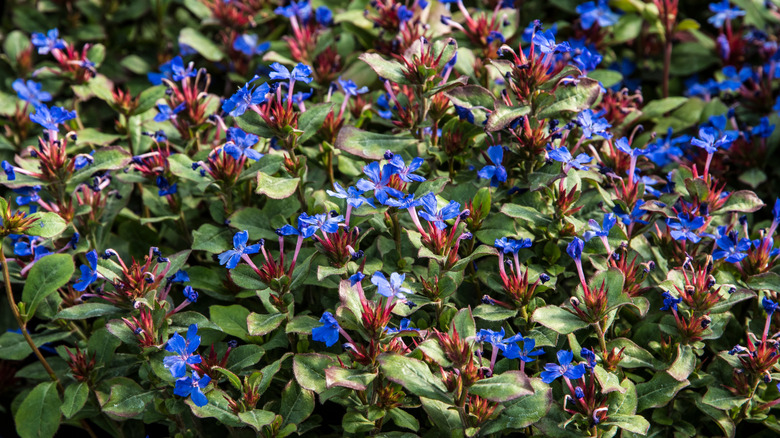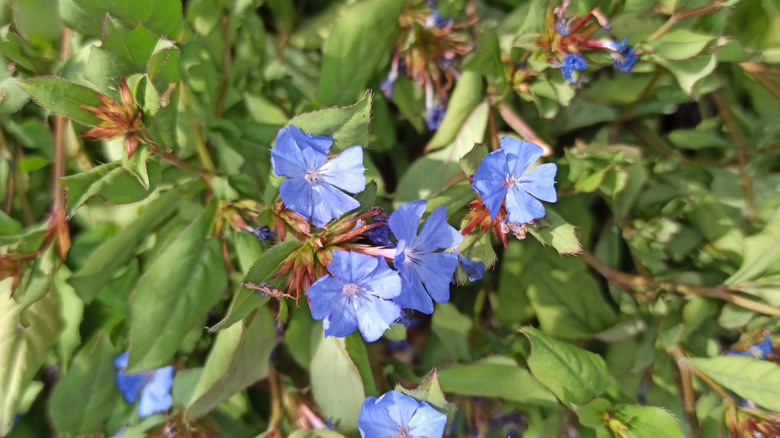Pruning Tips To Keep Flowering Blue Plumbago Looking Its Best
Although many gardeners would think of a sprawling, somewhat unruly, and vine-like shrub when you mention blue plumbago (Plumbago auriculata), there is a related species in the same family that grows as a gorgeous ground cover with similar dainty blue flowers, and makes a great alternative to Ajuga bugleweed. It's also commonly known as hardy plumbago (Ceratostigma plumbaginoides) and is regarded as a pretty blue-flowering plant that'll help keep weeds out of the garden. But, as this particular species is quite an aggressive spreader, you'll want to know how to prune it to keep it contained and looking its best.
Before you get your pruning shears out, understand that this ground cover will lose its leaves in winter, so choosing the right time to give it a trim is important. A regular trimming back of the new growth stems will also stimulate a denser habit and keep your plant looking lush and healthy. You'll be pleased to know that deadheading of spent flowers is not necessary for this species because the flowers are self-cleaning, which means they'll drop down of their own accord.
Top tips for pruning a blue plumbago ground cover
Ideally, you'll want to prune this ground cover during its active growing season over spring and summer to maintain a tidy habit and stop it from encroaching into other garden areas. Try to avoid any fall or winter pruning to ensure you'll have plenty of new growth in late spring and because the old stems will mark the spot where new shoots will reappear. You'll find that the plant will be dormant during the colder months, so you can just cover the bare stems with a light layer of mulch to protect it from freezing temperatures. As this plumbago can spread quite dramatically through underground rhizomes, spring is also the best time to dig up and divide some of the plants. The remainder will have room to grow and give your ground cover a lovely, dense appearance.
You can also remove any dead or damaged stems just before new growth starts so they don't spoil the overall look of the plant. Once you see new shoots coming through, you can cut these back so they're only around 1 inch or so long. This should stimulate denser growth, keep your plumbago looking neat and attractive, and ensure that your ground cover will be absolutely flush with blooms, which will help this fast-growing ground cover will attract hummingbirds and pollinators to your yard.

